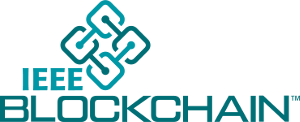A Consortium Blockchain-based Incentive Model for Crowdsensing
Lijun Wei; Jing Wu; and Chengnian Long (Corresponding author), Department of Automation, Shanghai Jiao Tong University, and Key Laboratory of System Control and Information Processing, Ministry of China
IEEE Blockchain Technical Briefs, September 2019
Discuss this topic on IEEE Collabratec
Crowdsensing is an emerging paradigm of data aggregation, which has a pivotal role in data-driven applications. It collects a large amount of sensing data by means of procurement or recruitment, which reduces the cost of data collection and improves the efficiency [1]. With the continuous expansion of the network scale and the intelligent evolution of sensing devices, crowdsensing has a significant development in various IoT applications such as transportation [2], pollution measure [3], etc. Typical crowdsensing is composed of mostly three parts: requesters, workers and platforms. The system architecture and general flow of sensing task are shown in Figure 1. The central platform manages all the users and stores all the data while providing the information and service to workers and requesters. Requesters publish tasks through the platform. After receiving the task, the worker will decide whether to participate and compete for participation. The selected workers will perform the sensing task and upload data by communicating with the central platform while the rewards will then be granted to workers after the uploaded data is verified.
Figure 1. Typical crowdsensing system
Despite that crowdsensing ideally enhances the efficiency and convenience of data aggregation, there are two critical vulnerabilities remain to be solved. First, in order to stimulate workers to contribute their own sensing data, the system must apply an appropriate incentive mechanism. Most of the recent work focus on the design of monetary incentive based on auction theory [4]. However, the existing monetary incentive only provides short-term incentive since it purely adopts monetary reward to stimulate workers to participate in each time slot [5]. Some passive workers may upload inaccurate data for selfish purpose, resulting in the problem of data quality. Moreover, the service fee charged by the central platform will increase the requesters’ incentive cost in some realistic scenarios. Second, the centralized platform may be subject to targeted or Denial-of-Service (DoS) attack [6]. The existing central platform-based approaches suffer from the single point of failure which may result in data leakage. Workers may worry that the individual privacy security is threatened and then exit the network, which is defined as the privacy-aware problem.
Consortium Blockchain-based Crowdsensing
To address the above issues, we propose a blockchain-based crowdsensing architecture. By combining consortium blockchain [7][8], requesters form an alliance to synchronize and manage the blockchain together, which will strengthen the attack resistance and prevent the targeted attack. The decentralized architecture will be more fault-tolerant to a single point of failure. Meanwhile, by using asymmetric encryption and digital signature technology, we can achieve data access control which is helpful to privacy protection in blockchain system. Another major advantage of blockchain-based crowdsensing system is that the cost of system maintenance will be reduced through multi-party cooperation. Specifically, data upload, verification and download will no longer rely on the specific central platform. Furthermore, as to the economic incentive and data quality problem, we will further design the hybrid incentive mechanism which incorporates the monetary-based and reputation-based incentives.
- System Architecture. A consortium blockchain-based crowdsensing system, as shown in Figure 2, consists of two major parties: requesters and workers. An authorized requester will enter the consortium, issue sensing tasks, and synchronize blockchain. As a data provider, the worker obtains the right to perform the task via bidding. The winning workers will be responsible for collecting, uploading the data and obtaining the corresponding reward Messages in the network are transmitted in the form of “transaction”. Due to the lack of a centralized organization, the process management of the sensing task will be one of the significant challenges in the decentralized system. We will adopt the smart contract [9] to ensure that each step of the task process can be executed automatically, thus guaranteeing task completion. The smart contract can be executed automatically when invoked by the transaction. In this way, the requester and the worker can update the state of the sensing tasks through the combination of the smart contract. More importantly, the original transaction data and the state update of tasks will be recorded in the blockchain, which will be non-repudiation so as to effectively prevent other parties from cheating.
Figure 2. The architecture of blockchain-based crowdsensing
- Incentive Mechanism. As to the incentive issue, we will design a hybrid incentive mechanism to ensure long-term and short-term incentives simultaneously. As discussed earlier, the monetary incentive approach is a short-term incentive method without considering the data quality problem. Therefore, we will combine the worker’s reputation which is a long-term accumulated metric into the monetary incentive mechanism. By rating workers’ credit, we will select workers who are more truthful. The hybrid incentive model which integrates the monetary and reputation-related factors will be superior to ensure the participation enthusiasms and data quality simultaneously. Specifically, in our crowdsensing system, we will record the data quality evaluation, the task rewards and the reputation value of workers through the blockchain. The advantages of blockchain structure is strictly time-ordered, irreversible, and long-term effective. This will help to the subsequent acquisition and analysis of the worker’s credit. By querying the state database, each requester can quickly acquire workers’ state data. Then the requester will execute the worker selection algorithm by considering the worker’s reputation and bidding comprehensively. The detailed worker selection algorithm will be the focus of our further research interest.
- Privacy Security. To solve the privacy security problem, we adopt the idea of decentralized management for sensing tasks. First, in the blockchain-based system, workers and requesters communicate with each other by employing “public address”[10], which helps reduce the dangers of identity exposure. Second, the permission of original data access is determined by the worker via asymmetric encryption and digital signature. When uploading data, the worker can confirm the authorized requester to access the original data so as to prevent the leakage of data in the blockchain system. Therefore, the combination of access control and distributed management will help to save and manage sensing data, which will reduce the risk of serious data leakage.
Conclusion and Future Work
This study sets out to develop a blockchain-based model to address the incentive and privacy problems in the crowdsensing system. Through the mode of collaborative management, the system can effectively prevent the single-point attack that exists in the traditional crowdsensing system and strengthen the privacy protection. Blockchain technology can be used to achieve the long-term preservation of information. The requester can accurately and consistently assess the credibility of workers by retrieving the information from the blockchain. Moreover, blockchain will boost the development of a hybrid incentive mechanism that jointly considers the economic and data quality issues, thus encouraging more sensor nodes to participate such as mobile phones, cameras, and automotive sensors. Therefore, a further study investigating the efficacy and safety of blockchain-based incentive model would be significant. However, the work is still in infancy. There are still some further issues that we have not considered yet. The storage burden of blockchain will be an important limitation of using blockchain for crowdsensing. We should consider a lightweight blockchain data format for crowdsensing. Besides, the block cutting mechanism should be considered for lightening the storage burden.
Acknowledgement
This work was supported in part by the National Nature Science Foundation under Grants 61673275, 61873166.
References
[1] R. K. Ganti, F. Ye, H. Lei, “Mobile Crowdsensing- Current State and Future Challenges,” IEEE Communications Magazine, vol. 49, no. 11, pp. 32-39, 2011.
[2] F. Kalim, J. P. Jeong, M.U. Ilyas, “CRATER: A Crowd Sensing Application to Estimate Road Conditions,” IEEE Access, vol. 4, pp. 8317-8326, 2016.
[3] W. Zamora, E. Vera, C. T. Calafate, et al., “GRC-Sensing: An Architecture to Measure Acoustic Pollution Based on Crowdsensing,” Sensors, vol. 18, no. 8, pp. 2596, 2018.
[4] D. Yang, G. Xue, X. Fang, et al., “Incentive mechanisms for crowdsensing: Crowdsourcing with smartphones,” IEEE/ACM Transactions on Networking (TON), vol. 24, no. 3, pp. 1732-1744, 2016.
[5] X. Zhang, Z. Yang, W. Sun, et al., “Incentives for mobile crowd sensing: A survey,” IEEE Communications Surveys & Tutorials, vol. 18 ,no. 1, pp. 54-67, 2015.
[6] M. Li, J. Weng, A. Yang, et al., “CrowdBC: A Blockchain-based Decentralized Framework for Crowdsourcing,” IEEE Transactions on Parallel and Distributed Systems, vol. 30, no. 6, pp. 1251 – 1266, 2018.
[7] E. Androulaki, A. Barger, V. Bortnikov, et al., “Hyperledger fabric: a distributed operating system for permissioned blockchains,” Proceedings of the Thirteenth EuroSys Conference, 2018.
[8] Z. Li, J. Kang, R. Yu, et al., “Consortium blockchain for secure energy trading in industrial internet of things,” IEEE transactions on industrial informatics, vol. 14, no. 8, pp. 3690-3700, 2017.
[9] G. Wood, “Ethereum: A secure decentralised generalised transaction ledger,” Ethereum project yellow paper, 2014.
[10] S. Nakamoto, “Bitcoin: A peer-to-peer electronic cash system,” 2008.
 Lijun Wei received his Bachelor degree in Automation from South China University of Technology, China, in 2016. He is currently working towards his Ph.D. degree in the School of Electronic Information and Electrical Engineering from Shanghai Jiao Tong University, China. His current research interests lie primarily in distributed consensus protocol, blockchain technology and IoT architecture.
Lijun Wei received his Bachelor degree in Automation from South China University of Technology, China, in 2016. He is currently working towards his Ph.D. degree in the School of Electronic Information and Electrical Engineering from Shanghai Jiao Tong University, China. His current research interests lie primarily in distributed consensus protocol, blockchain technology and IoT architecture.
 Jing Wu (M'08) received her B.S. degree from Nanchang University in 2000, M.S. degree from Yanshan University in 2002, and Ph.D. degree from University of Alberta in 2008, all in electrical engineering. Since 2011, she has been with Shanghai Jiao Tong University, Shanghai, China, and is currently an Associate Professor. Dr. Wu is a registered Professional Engineer in Alberta, Canada. Her current research interests include robust model predictive control, security control, and stability analysis and estimations for cyber-physical systems.
Jing Wu (M'08) received her B.S. degree from Nanchang University in 2000, M.S. degree from Yanshan University in 2002, and Ph.D. degree from University of Alberta in 2008, all in electrical engineering. Since 2011, she has been with Shanghai Jiao Tong University, Shanghai, China, and is currently an Associate Professor. Dr. Wu is a registered Professional Engineer in Alberta, Canada. Her current research interests include robust model predictive control, security control, and stability analysis and estimations for cyber-physical systems.
 Chengnian Long (M'07) received the B.S., M.S., and Ph.D. degrees from Yanshan University, China, in 1999, 2001, and 2004, respectively, all in control theory and engineering. He was a research associate in Department of Computer Science and Engineering, Hong Kong University of Science and Technology and a Killam postdoctoral fellow at University of Alberta, Canada. He has been with Shanghai Jiao Tong University in 2009, and is a full Professor since 2011. His current research interests include internet of things and blockchain technology, cyber-physical systems security, and smart wireless systems.
Chengnian Long (M'07) received the B.S., M.S., and Ph.D. degrees from Yanshan University, China, in 1999, 2001, and 2004, respectively, all in control theory and engineering. He was a research associate in Department of Computer Science and Engineering, Hong Kong University of Science and Technology and a Killam postdoctoral fellow at University of Alberta, Canada. He has been with Shanghai Jiao Tong University in 2009, and is a full Professor since 2011. His current research interests include internet of things and blockchain technology, cyber-physical systems security, and smart wireless systems.
Editor:
 Mohammed Atiquzzaman obtained his M.S. and Ph.D. in Electrical Engineering and Electronics from the University of Manchester (UK). He currently holds the Edith Kinney Gaylord Presidential professorship in the School of Computer Science at the University of Oklahoma and is a senior member of IEEE. Dr. Atiquzzaman is the Editor-in-Chief of Journal of Networks and Computer Applications and the founding Editor-in-Chief of Vehicular Communications and has served/serving on the editorial boards of IEEE Communications Magazine, IEEE Transactions on Mobile Computing, International Journal on Wireless and Optical Communications, Real Time Imaging Journal, Journal of Communication Systems, Communication Networks and Distributed Systems, and Journal of Sensor Networks. He also guest edited many special issues in various journals. He has served as the general chair of 4th International Conference on Internet of Vehicles and has served as symposium co-chairs for IEEE Globecom (2006, 2007, and 2014, 2016) and IEEE ICC (2007, 2009, 2011, and 2012, 2014, 2016 2017) conferences. He co-chaired ChinaComm (2008) served as general chair of 2017 International Conference on Smart Internet of Things (SmartIoT 2017) and the SPIE Quality of Service over Next Generation Data Networks conferences (2001, 2002, 2003, and 2005). He was the panels co-chair of INFOCOM’05 and is/has been in the program committee of numerous conferences such as INFOCOM, ICCCN, and Local Computer Networks. He serves on the review panels of funding agencies such as the National Science Foundation and National Research Council (Canada) and Australian Research Council (Australia).
Mohammed Atiquzzaman obtained his M.S. and Ph.D. in Electrical Engineering and Electronics from the University of Manchester (UK). He currently holds the Edith Kinney Gaylord Presidential professorship in the School of Computer Science at the University of Oklahoma and is a senior member of IEEE. Dr. Atiquzzaman is the Editor-in-Chief of Journal of Networks and Computer Applications and the founding Editor-in-Chief of Vehicular Communications and has served/serving on the editorial boards of IEEE Communications Magazine, IEEE Transactions on Mobile Computing, International Journal on Wireless and Optical Communications, Real Time Imaging Journal, Journal of Communication Systems, Communication Networks and Distributed Systems, and Journal of Sensor Networks. He also guest edited many special issues in various journals. He has served as the general chair of 4th International Conference on Internet of Vehicles and has served as symposium co-chairs for IEEE Globecom (2006, 2007, and 2014, 2016) and IEEE ICC (2007, 2009, 2011, and 2012, 2014, 2016 2017) conferences. He co-chaired ChinaComm (2008) served as general chair of 2017 International Conference on Smart Internet of Things (SmartIoT 2017) and the SPIE Quality of Service over Next Generation Data Networks conferences (2001, 2002, 2003, and 2005). He was the panels co-chair of INFOCOM’05 and is/has been in the program committee of numerous conferences such as INFOCOM, ICCCN, and Local Computer Networks. He serves on the review panels of funding agencies such as the National Science Foundation and National Research Council (Canada) and Australian Research Council (Australia).
Mohammed received from IEEE the 2018 Satellite and Space Communications Technical Recognition Award for valuable contributions to the Satellite and Space Communications scientific community. He also received the 2017 Distinguished Technical Achievement Award from IEEE Communications Society in recognition of outstanding technical contributions and services in the area of communications switching and routing. In recognition of his contribution to NASA research, he received the NASA Group Achievement Award for “outstanding work to further NASA Glenn Research Center’s effort in the area of Advanced Communications/Air Traffic Management’s Fiber Optic Signal Distribution for Aeronautical Communications” project. He is the co-author of the book “Performance of TCP/IP over ATM networks” and has over 270 refereed publications, which are accessible at www.cs.ou.edu/~atiq. His research interests are in communications switching , transport protocols, wireless and mobile networks, ad hoc networks, satellite networks, quality of service, and optical communications. His research has been funded by National Science Foundation (NSF), National Aeronautics and Space Administration (NASA), Us Air Force, Cisco, Honeywell, Oklahoma Department of Transportation, Oklahoma Highway Safety Office through grants totaling over $7M.
Subscribe to the IEEE Blockchain Technical Briefs
Join our Blockchain Technical Community and receive our Technical Briefs by email.
IEEE Blockchain Technical Briefs Editorial Board
Gora Datta, FHL7, SMIEEE, SMACM, Managing Editor
2024 Editorial Team
Justin Y. Shi, PhD, Editor-in-Chief
Boleslaw K. Szymanski, PhD
R.L. Shankar, PhD
Imran Bashir
Nicolae "Nicu" Goga, PhD
Constantin “Viorel” Marian, PhD
View the 2023 IEEE Blockchain Technical Briefs Editorial Board
View the 2022 IEEE Blockchain Technical Briefs Editorial Board
View the 2018-2020 IEEE Blockchain Technical Briefs Editorial Board
Past Issues
Read the top five most popular IEEE Blockchain Technical Briefs articles.
Read more (PDF, 731 KB)






